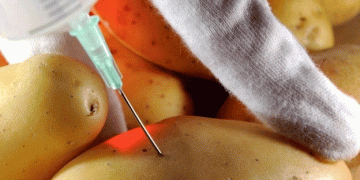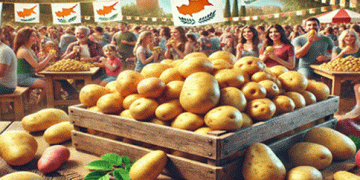#PotatoPrices #OptimizationStrategies #Agriculture #SupplyChain #CropManagement #MarketDemand #IndustryChallenges #FinancialAnalysis #WeatherConditions
Rabo AgriFinance raises concerns about potato prices in 2023 and emphasizes the need for optimization strategies. This article explores the potential development of potato prices, discusses the contributing factors, and highlights the consequences of these price fluctuations. Discover key insights and strategies to navigate the potato market effectively. #PotatoPrices #OptimizationStrategies #Agriculture
The year 2023 has brought about growing concerns within the potato industry regarding fluctuating prices. Rabo AgriFinance, a leading agricultural financial institution, has recently shed light on the issue, urging stakeholders to focus on optimization strategies to mitigate potential risks.
Potatoes are one of the most versatile and widely consumed crops globally, making their price fluctuations a matter of significant importance to farmers, processors, and consumers alike. Understanding the development of potato prices and their underlying factors is crucial for industry participants to make informed decisions.
Several factors contribute to the development of potato prices. Firstly, weather conditions and their impact on crop yields play a significant role. Adverse weather events such as droughts, floods, or extreme temperatures can lead to reduced potato production, resulting in a supply shortage and potentially driving prices up. On the other hand, favorable weather conditions can boost yields, leading to a surplus and subsequently pushing prices down.
Market demand is another influential factor. Fluctuations in consumer preferences, changing dietary habits, and shifts in the food industry can all affect the demand for potato products. For instance, increased interest in healthier alternatives and the rise of plant-based diets might impact the demand for processed potato products, potentially influencing prices.
In addition to weather conditions and market demand, the potato industry faces challenges related to transportation and logistics. Rising fuel prices, transportation disruptions, or trade restrictions can impact the cost of transporting potatoes from farms to processing plants or distribution centers. These factors can add extra pressure on prices and affect profitability along the supply chain.
The consequences of fluctuating potato prices can be far-reaching. For potato farmers, sudden price drops can result in financial difficulties and lower profits, potentially jeopardizing their livelihoods. Processors and distributors may also face challenges in managing inventory and adjusting pricing strategies to accommodate changing market conditions. Consumers may experience price fluctuations at the retail level, which can impact their purchasing decisions and food budgets.
To navigate the potato market effectively, industry participants are advised to adopt optimization strategies. This includes leveraging technology and data analytics to improve crop management, enhance productivity, and minimize production costs. Furthermore, establishing partnerships and collaborations along the supply chain can help optimize logistics, reduce inefficiencies, and ensure a stable flow of potatoes from farms to consumers.
Concerns over potato prices in 2023 have prompted Rabo AgriFinance to emphasize the importance of optimization strategies within the industry. The development of potato prices is influenced by factors such as weather conditions, market demand, and logistical challenges. Understanding these dynamics and implementing effective optimization strategies can help mitigate risks, ensure profitability, and maintain a stable supply of potatoes for consumers worldwide.






